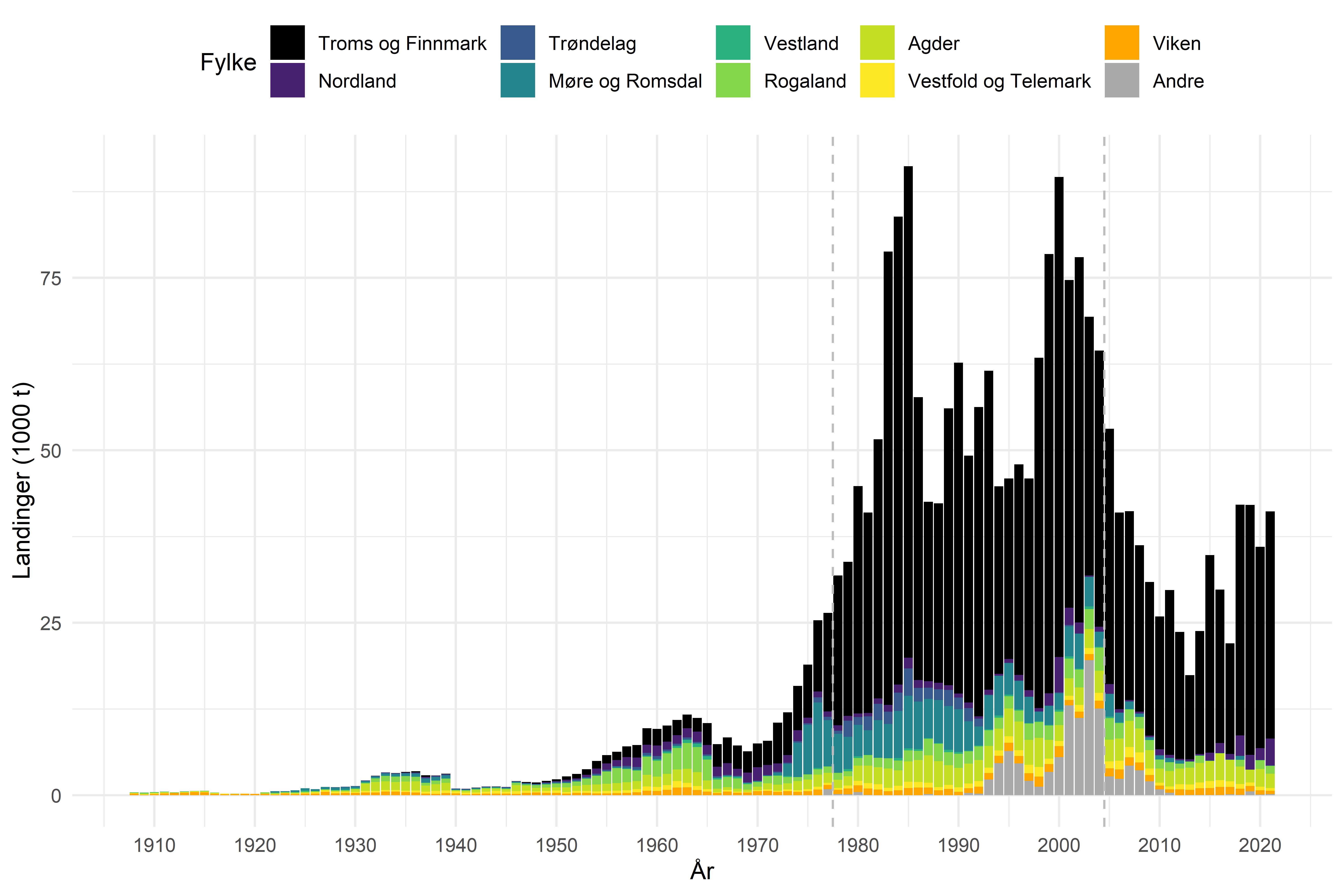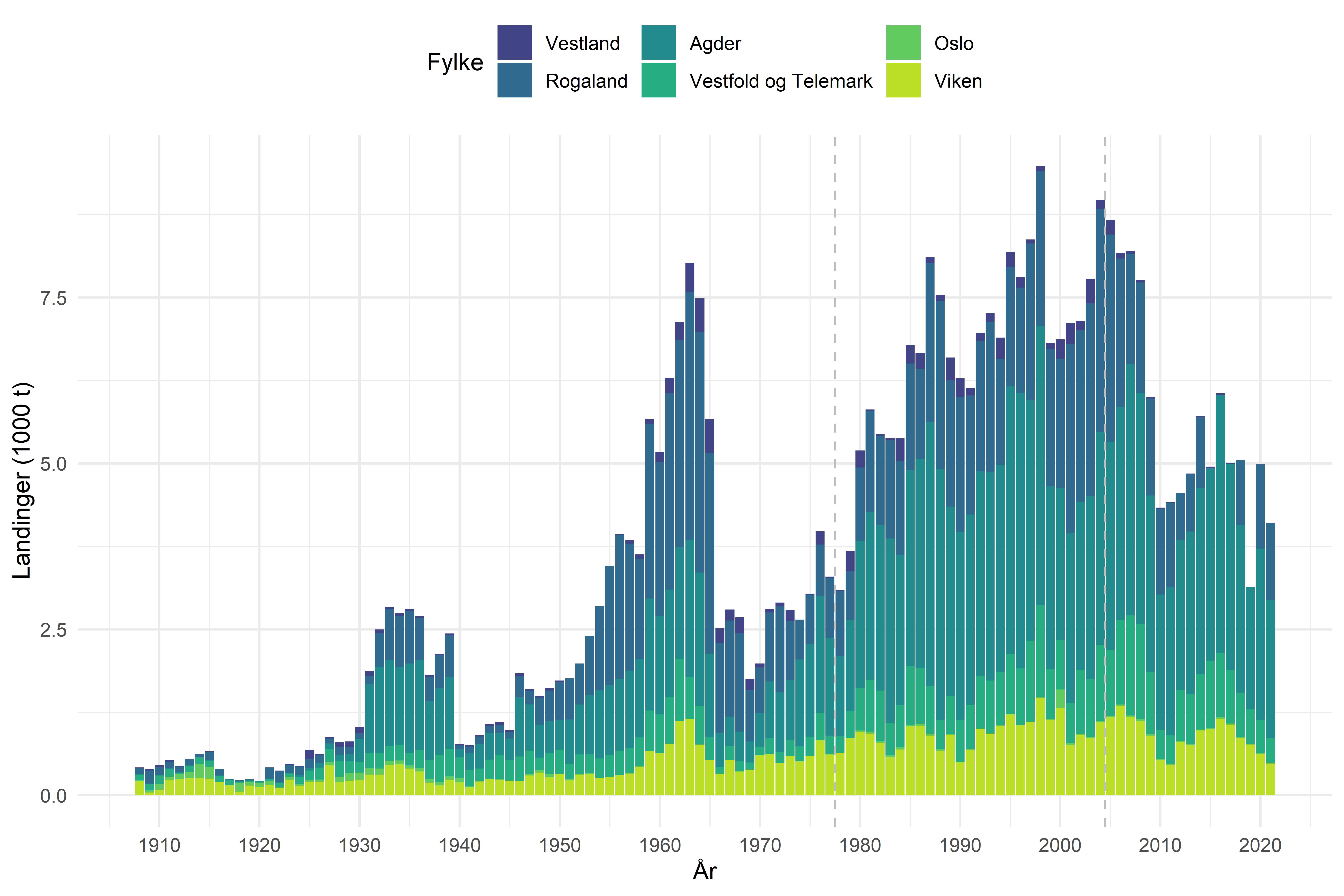Evolution of the shrimp fishery – from 1908 to today

Shrimp fishing in the old days.
Photo: Alf Dannevig / IMR
Shrimp trawler in the Langesund bay in 1925.
Photo: Alf Dannevig / IMRPublished: 25.08.2022 Updated: 07.09.2022
The Norwegian shrimp fishery started in Skagerrak and Oslofjorden as long ago as in 1899, when fisheries scientist Johan Hjort discovered large shrimp populations in the Oslofjord and Skagerrak. Going right back to 1908, shrimp catches landed at Norwegian ports have been recorded. However, most of this data has been in old statistical yearbooks, which makes it difficult to access.
Marine scientists have now for the first time digitised the old data and created a continuous time series for shrimp landings in Norway, broken down by county, covering every year since 1908.
With the help of this data, they have also been able to estimate how the shrimp population in the North Sea and Skagerrak has evolved over this period.
From the coast to the open ocean
“The time series shows how the shrimp fishery, after starting in eastern Skagerrak and Oslofjorden at the end of the 19th century, spread west and north along the coast over the following decades, developing into an important coastal fishery”, says Guldborg Søvik, a researcher at the Institute of Marine Research (IMR).
In the 1920s and 30s, fishers started trawling for shrimps on the rich shrimp grounds further out in Skagerrak.
“The Second World War brought the fishery’s growth to a halt, but after the war the volumes being landed quickly picked up. That was when industrial fishing and offshore fishing in the Barents Sea and by Svalbard developed. At times, Norwegian fishers have also caught shrimps near Jan Mayen and Greenland, and in international waters near Canada”, says Søvik.
The report has been written by Katrine Wilhelmsen Melaa who is doing a Master’s at the University of Bergen, with good support from Søvik and her IMR colleagues Fabian Zimmermann and Trude Hauge Thangstad.
Large variations over time and between counties
Industrialisation and the expansion of the fishing grounds led to a significant increase in landings of shrimps from around 1980 onwards: while the annual landings had previously been around a few thousand tonnes, they reached over 80,000 tonnes in the 1980s and early 2000s.
In recent decades, in particular, there have been large fluctuations, both in the total landings and in the distribution between counties.
According to the researchers, these fluctuations can mainly be explained by technological developments and economic factors, in other words price.
“But the data also show a decline in shrimp landings in Western and Central Norway, which suggests that the shrimp fishery is disappearing or has already disappeared from those areas. That also suggests the population itself is in the process of disappearing in several places”, says Søvik.


Fewer shrimps than before
In the shrimp fisheries along the coast and in the Barents Sea, there are no catch quotas, just technical measures.
The fishery in Skagerrak and the Norwegian Trench, on the other hand, is regulated with quotas, with the International Council for the Exploration of the Sea (ICES) giving the quota recommendations.
In the annual report published by the ICES working group on shrimps earlier this year, the working group researchers put the historical landings data into the stock assessment model used by ICES for providing quota recommendations. The model estimates the size of the spawning stock based on survey and fishery data.
By putting the whole time series for landings from the Norwegian, Swedish and Danish shrimp fisheries into the model, the scientists in the working group were able to estimate how the stock has varied over the period between 1908 and now.
“This time series is longer than the ones we have for almost all other stocks”, says Guldborg Søvik.
The time series shows a marked decline in the spawning population since the start of the fishery: the researchers estimate that the spawning population today is around one eighth of its size in 1908.
“That is quite a dramatic decline”, says Søvik.

Old data worth its weight in gold
The landings data is often the only available source of data for most of the time that a fishery has existed. According to Søvik and her colleagues, this data can therefore make a vital contribution to assessing stocks and managing fisheries.
“Time series of landings covering the whole period of the fishery provide us with an important reference point against which to compare the current state of the fishery and stock”, she says.
In the new IMR report, the researchers recommend that all landings data for all species be made available in the greatest possible spatial resolution.
“That will broaden our perspective on how the fishery has developed, and can help ensure sustainable management of our marine resources”, conclude the scientists.
References:
ICES, "Joint NAFO\ICES Pandalus Assessment Working Group (NIPAG)", ICES Scientific Reports, 4:38 (2022). Link: doi.org/10.17895/ices.pub.19692181
Melaa, Kathrine Wilhelmsen, Fabian Zimmermann, Guldborg Søvik & Trude Hauge Thangstad, "Historic landings of northern shrimp (Pandalus borealis) in Norway - Data per county for 1908-2021", Rapport fra havforskningen (2022). Link: hi.no/hi/nettrapporter/rapport-fra-havforskningen-en-2022-24
